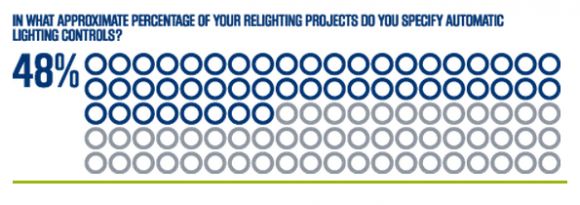As was shown by the flood of announcements leading up to the Lightfair conference last week, all the major LED companies are focusing on implementing intelligent platforms for controlling lighting fixtures in industrial and commercial buildings. A range of new partnerships are being formed to make it easier for LED manufacturers to produce "intelligence-ready" products, which may also create new opportunities for setting modern communications standards in lighting.
Lights offer the perfect entry point for building intelligence. In many cases, a smart lighting system is the first thing in a building that connects discrete pieces of equipment to central controls. Audra Technologies, Digital Lumens and Daintree Networks, a few emerging and fast-growing companies with platforms that granularly control lights, recognize the opportunities to expand to other pieces of equipment in buildings. As they grow their capabilities, they see themselves as far more than lighting companies.
While these platforms are still only installed in a fraction of the world's buildings, a new survey shows that they're making gains. According to a survey of 4,000 energy efficiency professionals conducted by the lighting manufacturer Precision-Paragon, 48 percent of respondents say they're using some form of intelligence when retrofitting lights. That doesn't mean that every system is truly "smart," however. Lighting controls include a range of applications from simple motion sensors to the granular monitoring systems that track occupancy, light quality, temperature, humidity and building energy consumption.

So the survey doesn't tell us exactly what kind of automatic controls are being integrated. But the results do illustrate that lighting is getting smarter, even if it is somewhat incremental.
Nearly 70 percent of respondents said that linear fluorescent lights, which don't offer the same level of controllability as LEDs, will be the dominant technology installed in 2013. That can limit the IQ of a lighting system. Just over one quarter of professionals said that LEDs will dominate their installations. Those results are consistent with broader penetration of LEDs, which are expected to take 25 percent of the market globally by next year.
For more on this trend in lighting, download our new free report on intelligent efficiency.



